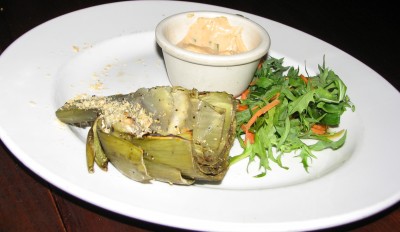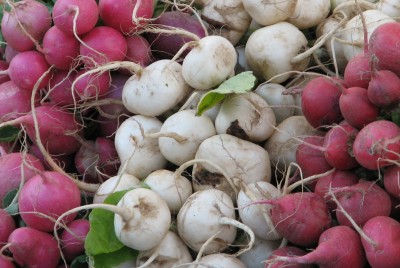After visiting the San Carlos de Borromeo Mission, we headed into the nearby town of Carmel-by-the-Sea. Carmel is a cute, resort town a few miles away from Monterey, which has evolved as a quirky, artsy community over the years. Back in the early 1900s, several well-known writers lived there, including Jack London, Ambrose Bierce, Upton Sinclair and Sinclair Lewis. Apparently it is very dog friendly, with pups being welcomed in most shops and hotels and the outdoor areas of restaurants. Clint Eastwood was the Mayor there for one term in the late 1980s. Curiously, there is a law prohibiting wearing women from wearing heels over two inches high – to lessen the risk of lawsuits from tripping on the sidewalks, which are uneven from being pushed up by tree roots. If you are interested in wearing high heels, don’t worry, you can get a permit for free from City Hall – and the law is not enforced.
After checking out Carmel, we continued to the 17 Mile Drive. The 17 Mile Drive is a scenic drive in the gated community of Pebble Beach. Non-residents must pay a toll of $9.75 to get into the community – but you get a map with your admission, and once in, you can travel at your leisure visiting the many scenic vistas and pull-outs along the drive. The map gives you a bit of information about each of the stops.
The day we were there, it was a bit foggy – that is typical – but relatively warm for March, with just a mild breeze. There were some surfers catching a wave off the beach and we watched them for a few minutes before continuing on our way. China Rock was next – named for the Chinese immigrants who made their homes in lean-tos against the rocks in the late 1800s and early 1900s. They fished and polished agates to sell to tourists to make a living.

A Cloudy Day at the 17 Mile Drive
One interesting vista point is at Bird Rock. As the story goes, Bird Rock was called that because thousands of birds roosted there. Bird Rock was harvested for its rich deposits of guano back in the early 1900s (bird poop makes great fertilizer!) and after the guano was gone, the seals and sea lions decided this rock seemed like a good place to hang out! So now, Brandt’s Cormorants, Western Gulls, pelicans and Ashy Petrels hang out with California Sea Lions and Harbor Seals, all vying for the perfect spot.

Bird Rock on the 17 Mile Drive – Get Your Fill of Guano Here!
In the parking lot of the view point, there are several California Ground Squirrels that make their home in burrows they have dug in the rocky soil at the edge of the water. Even though there are several signs asking tourists to not feed the animals, and their fleas can carry bubonic plague (not something I want any experience with!) we found someone ignoring the signs right away…

A Tourist Feeding Ground Squirrels
Fanshell Overlook is a great place to spot Harbor Seals. The moms and pups love the soft white sand beach so much that they close the beach from April 1 to June 1. During our visit there were already seals there hanging out enjoying their time on the beach. I could stand there and watch them for hours…

Harbor Seals on the Beach Below Fanshell Overlook
Another of the scenic pull-outs is at the Lone Cypress, which is a Monterey Cypress tree growing on a rock outcropping jutting out into the bay. Monterey Cypress trees are native to only two small areas, at Cypress Point in Pebble Beach and at Point Lobos near Carmel. The trees in these native stands are up to 40 meters tall, 2.5 meters diameter and 300 years old. These trees are unique because as they age, they take on a twisted, spread-out form due to the high winds that they are exposed to on the coast of California.

The Lone Cypress – Estimated Age 250 Years

The Lone Cypress Isn’t Really As Lonely As They Make It Out To Be
As you drive, you see the beautiful homes of the rich and famous – this is some of the most exclusive real estate in the world. Some of its famous residents include Charles Schwab, King Merrill Chase (GM Executive), George Lopez, Clint Eastwood and Condoleeza Rice. On the drive, you also come upon the Pebble Beach Golf Links and the Pebble Beach Lodge. The lodge is open to the public, and so is the golf course, but at $495 for 18 holes, it is a bit rich for my blood. You can stay at the historic Lodge (built in 1919) starting at a mere $745 per night! I better keep looking for my anonymous benefactor… Good thing golf isn’t really my sport anyway. I’ll stick to mini-golf!

A View of the Pacific Ocean Through the Gnarled Cypress Trunks
The entire drive is 17 miles, and is well worth the time. The only thing that would have made it better is if we had blue skies – but I suppose the cloudy weather probably meant that there were fewer tourists. There are only limited options for food and fuel (super expensive gas!) – the Pebble Beach Lodge does have a public restroom tucked in among the many ritzy golf shops and clothing boutiques.
After our slow cruise through the 17 Mile Drive, it was time to hit the highway for our next destination – Sacramento!







































